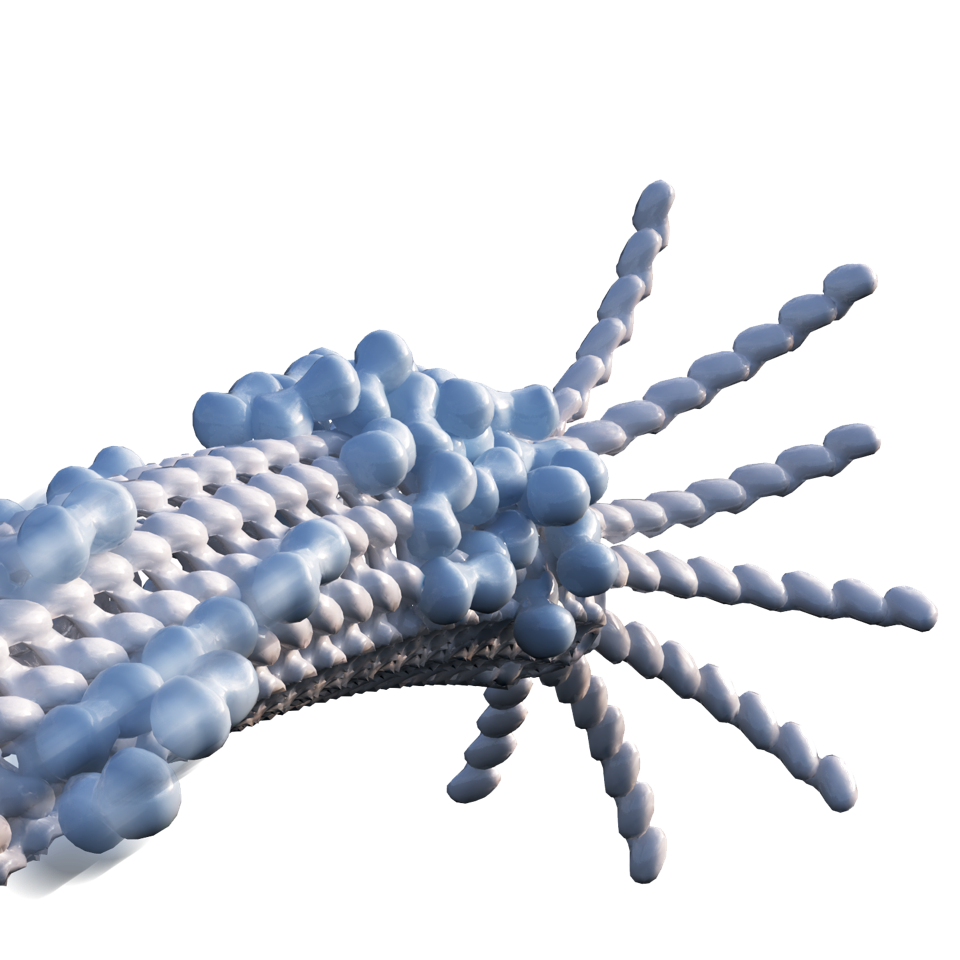Nonequilibrium diffusion and capture mechanism ensures tip-localization of regulating proteins on dynamic filaments
Emanuel Reithmann, Louis Reese, Erwin Frey

In eukaryotic cells, a network of highly dynamic filamentous biopolymers, called microtubules, is involved in many vital processes such as intracellular organization and cell division. To ensure a proper functioning of these processes, a precise regulation of the microtubule network is inevitable. It relies on an intricate but largely unsolved interplay of a plethora of microtubule-associated proteins. In our study, we employ a mathematical model to elucidate mechanisms exploited by two central microtubule-regulating proteins to ensure efficient regulation. Both proteins carry out essential tasks in acting as microtubule polymerization or depolymerization factors, respectively, as soon as they reach the microtubule end.
The model is directly motivated by recent experimental results [1,2] which have revealed a diffusive motion of these proteins while bound to the microtubule. Our results show that diffusive motion on the microtubule has large implications: Both proteins may localize very efficiently at their respective site of action, the microtuble end, due to diffusive motion. As a prerequisite for end-localization, we show that the proteins, however, need to recognize the microtuble end and then stop their diffusive motion--the so-called capture mechanism. The capture mechanism then drives the system out of thermal equilibrium and thereby creates a particle current towards the microtuble end. Our results suggest that without protein capture and in thermal equilibrium, no significant protein localization occurs which would, in turn, require unphysiologically high protein concentrations to ensure proper microtubule regulation. Based on newly developed analytic methods and computer simulations, we show that our model is in excellent agreement with experimental data from previous in vitro studies for the investigated proteins. Further, our findings allow us to quantify the benefit of the diffusion and capture mechanism. Strikingly, we find that diffusion and capture acts most efficiently at physiological cellular concentrations for both proteins, which suggests in vivo relevance of the diffusion and capture mechanism.
On a broader perspective, our findings might also be applicable to actin regulating proteins and DNA-binding proteins and might shed light on nonequilibrium systems very generally.
[1] J. Helenius, G. J. Brouhard, Y. Kalaidzidis, S. Diez, and J. Howard, Nature 441, 115-119 (2006).
Image: Christoph Hohmann, Nanosystems Initiative Munich (NIM)

